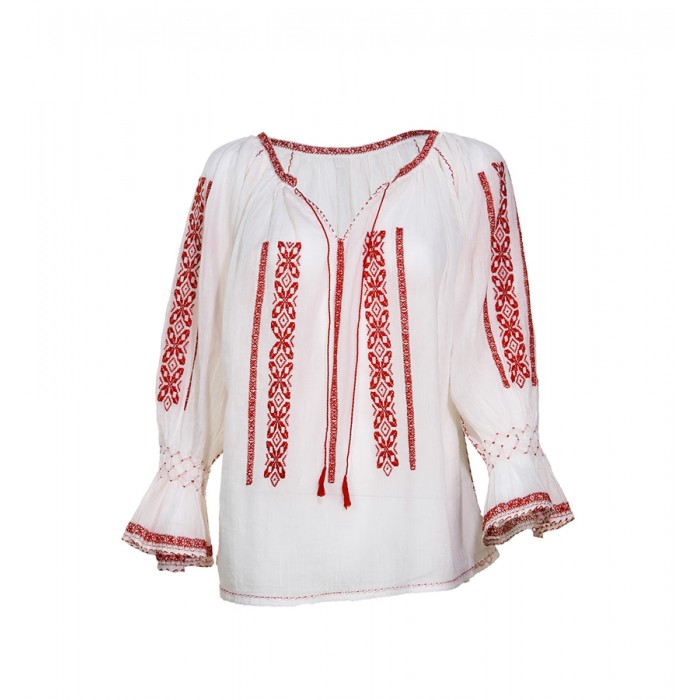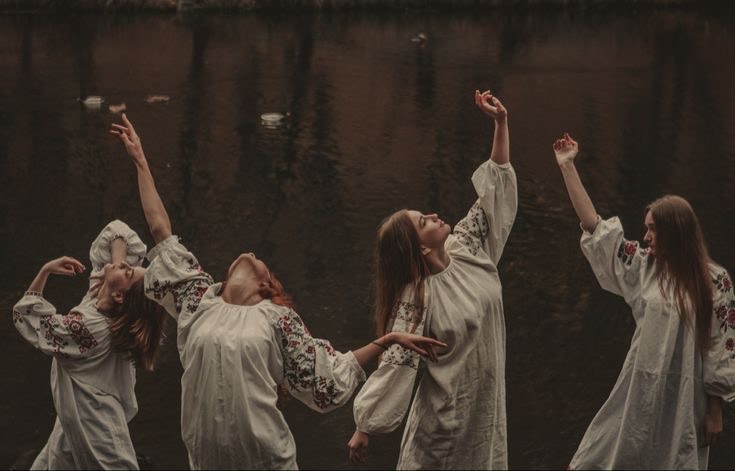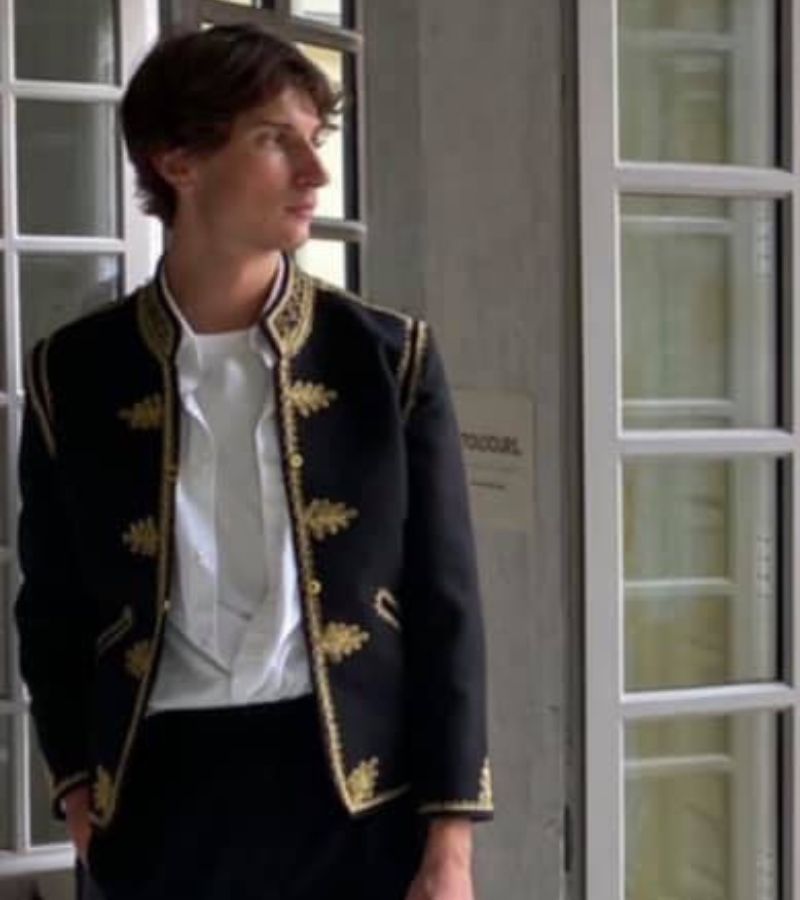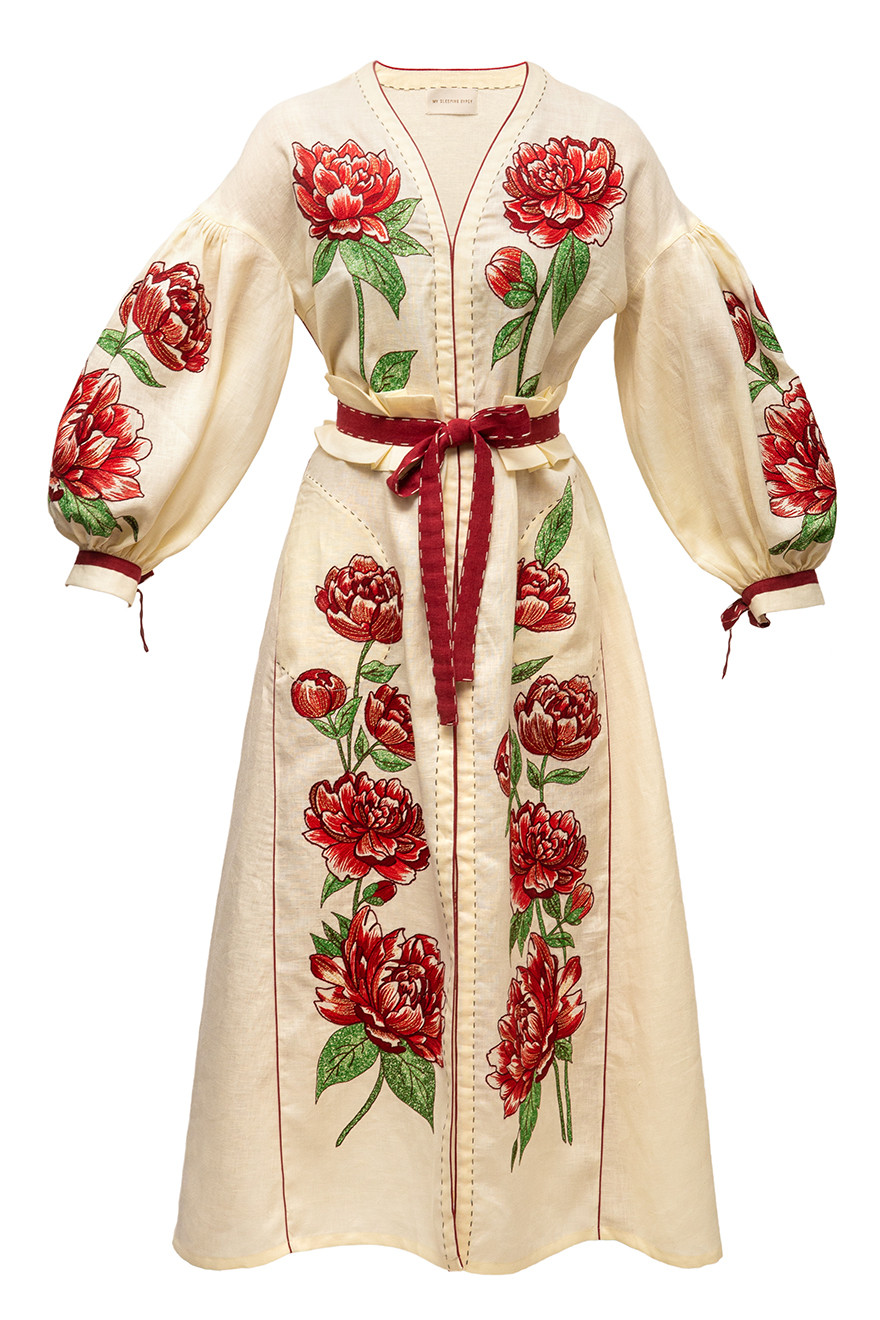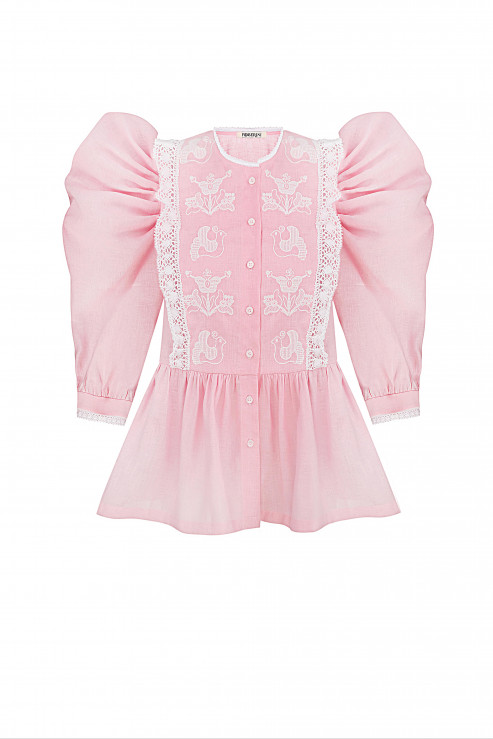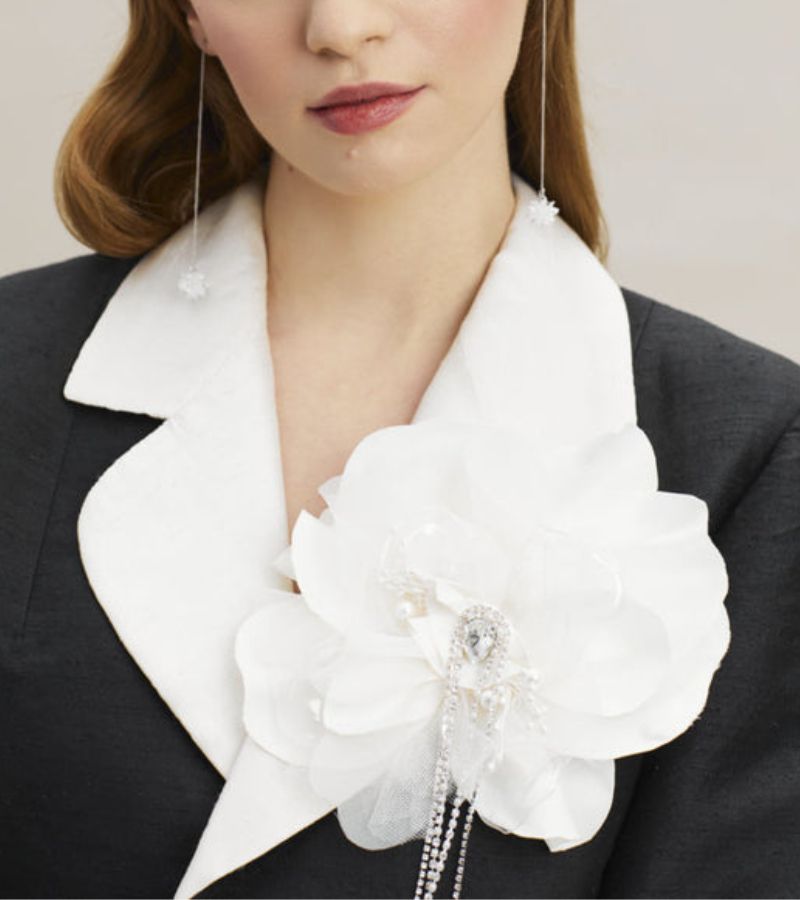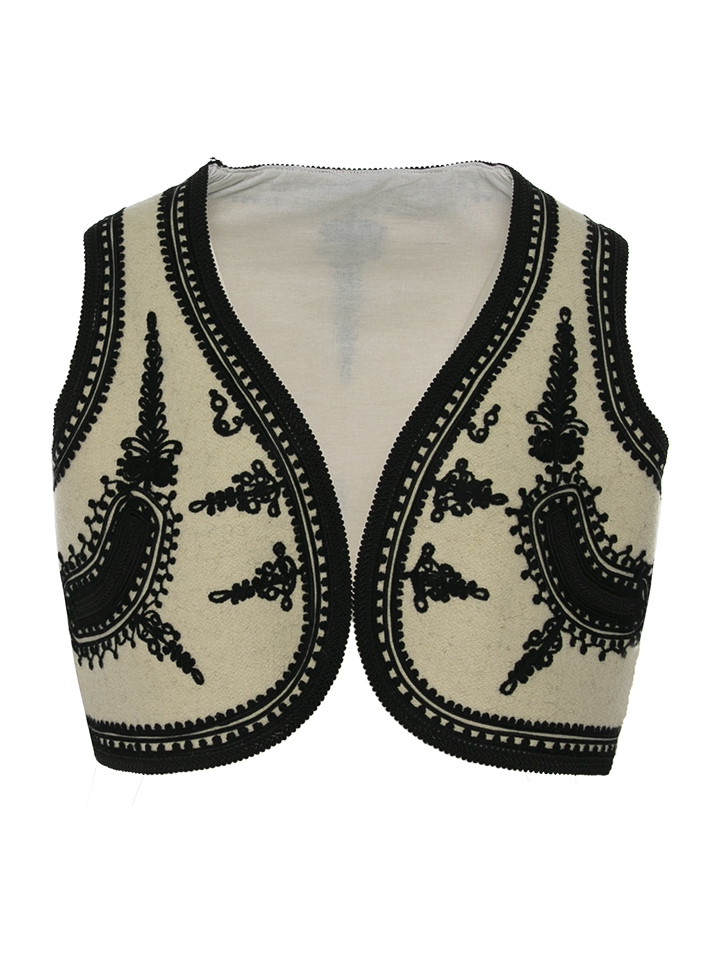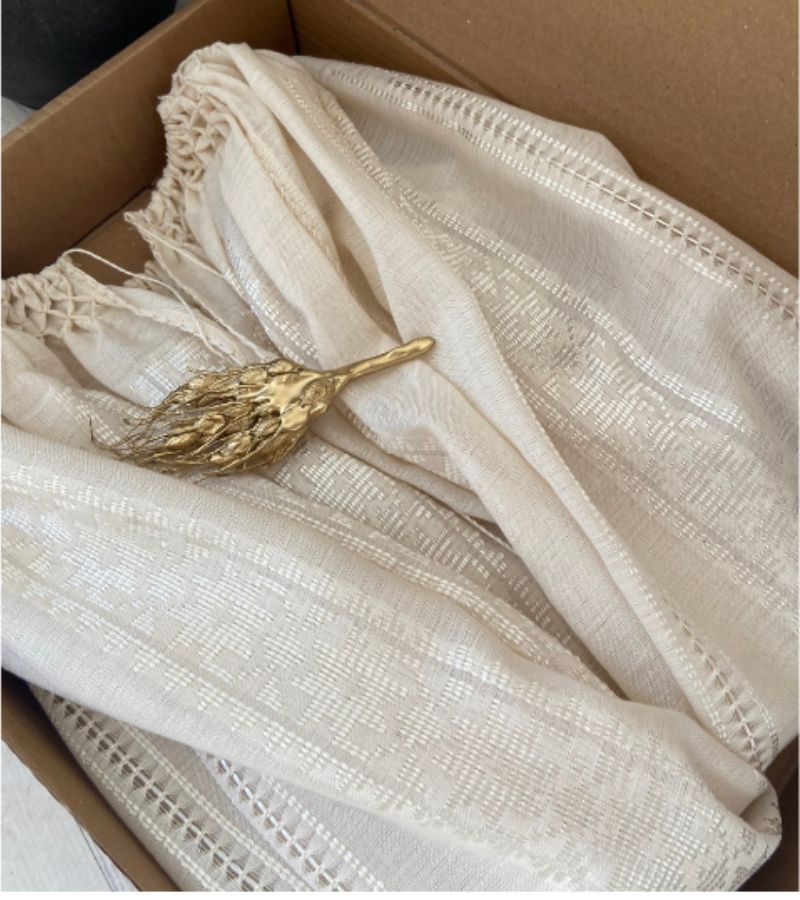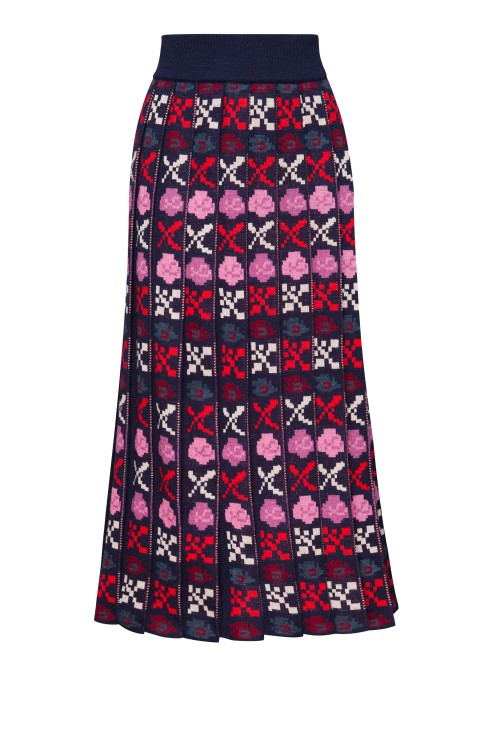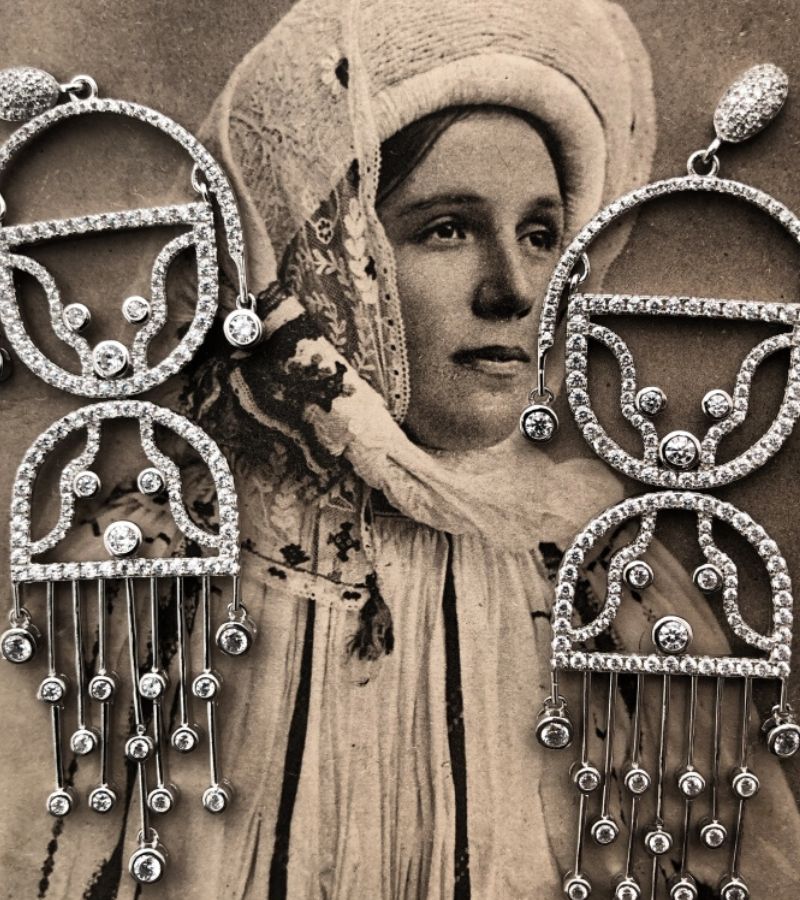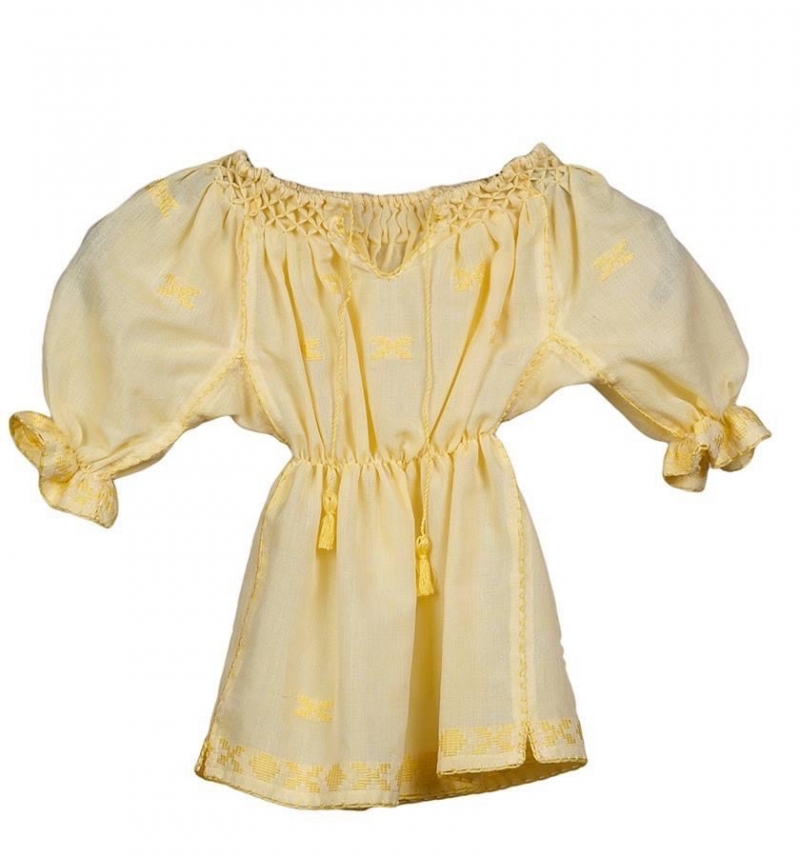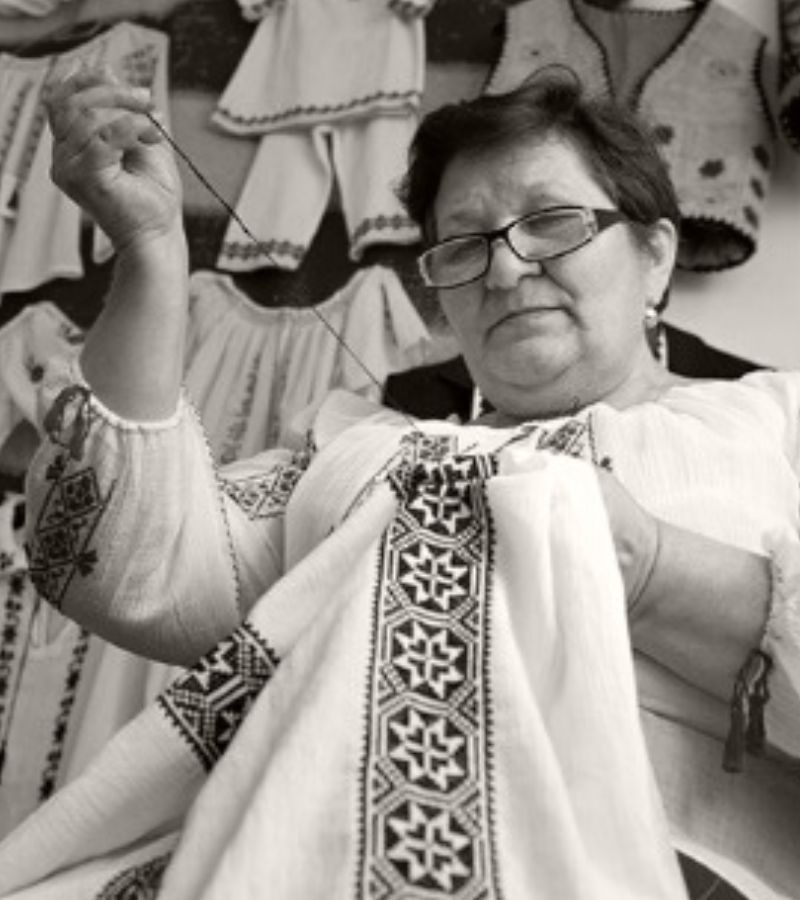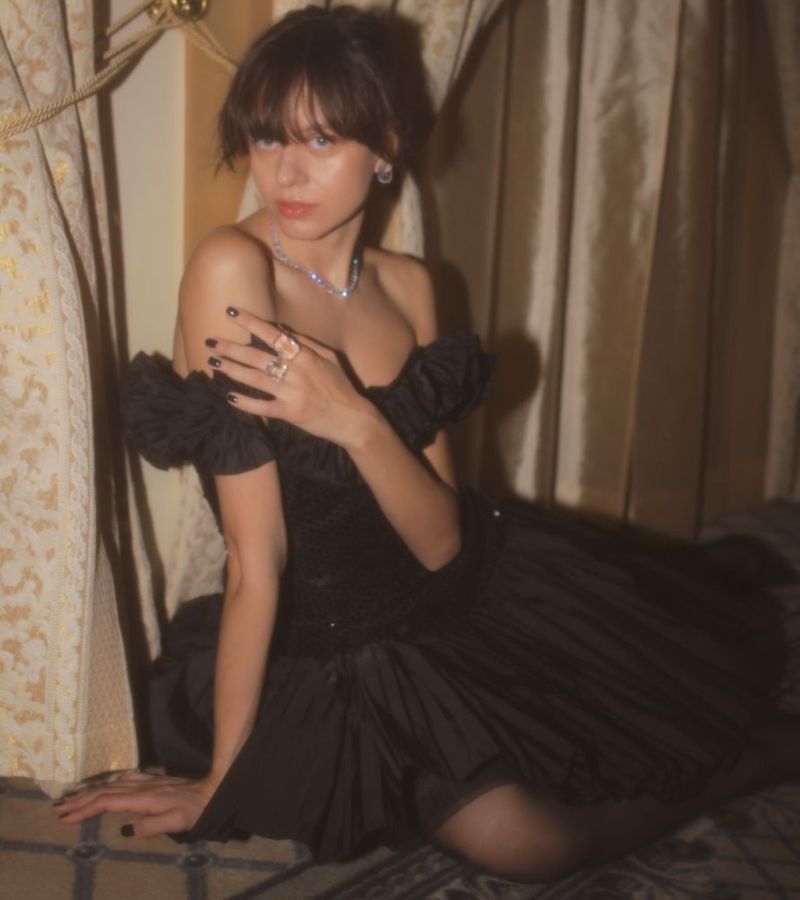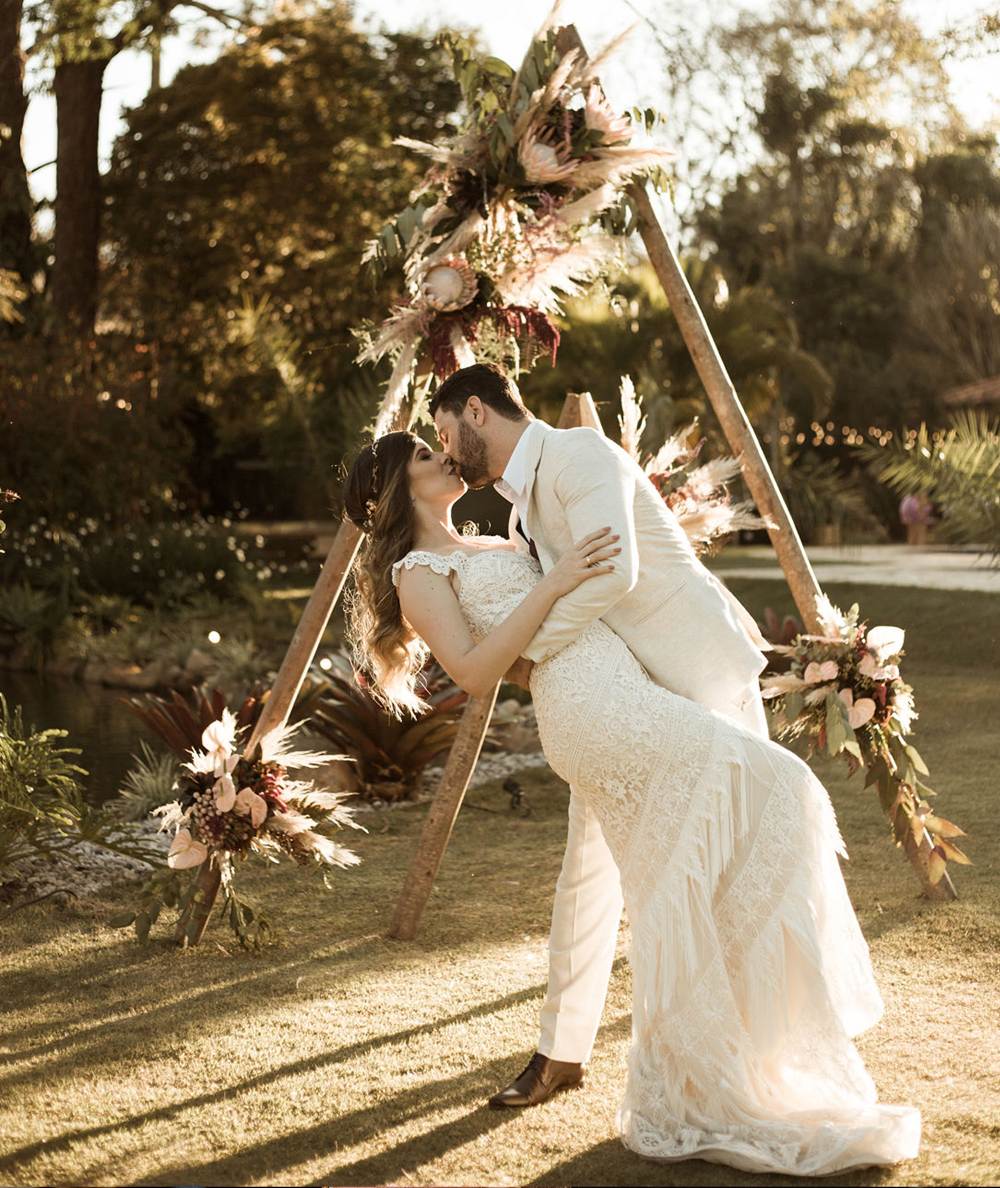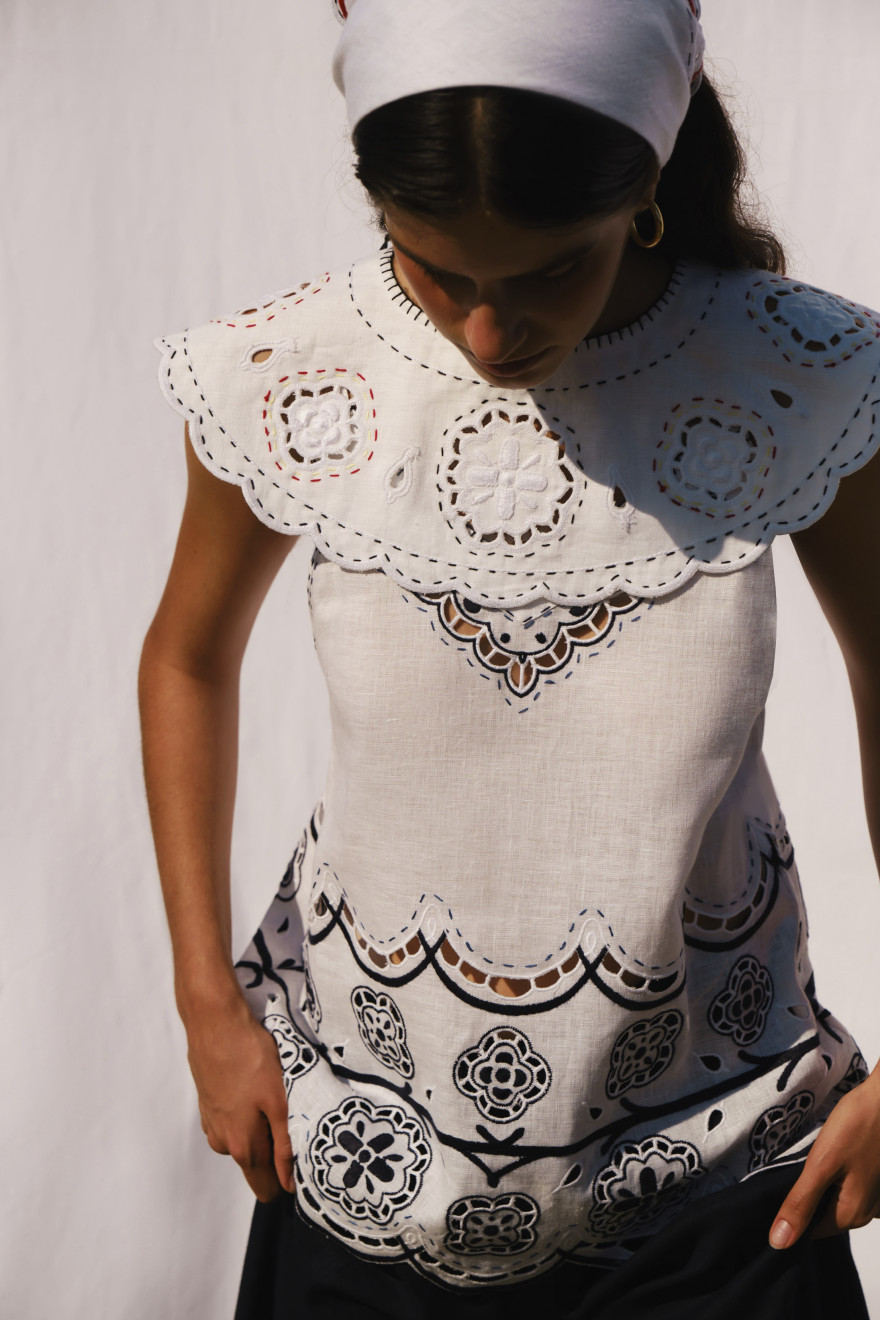
Richelieu embroidery, also known as cutwork embroidery, is a type of needlework that originated in 16th century Italy. It is a delicate and intricate technique that involves cutting away fabric threads to create a lace-like effect. The technique was popularized in France during the 17th century, during the reign of Cardinal Richelieu, after whom it is named.
Richelieu embroidery typically involves working on a piece of sheer fabric, such as organza or linen. The design is first drawn onto the fabric and then the threads within the design are carefully cut away, leaving behind a delicate lace pattern. The remaining threads are then secured with small stitches to prevent unraveling.
The technique can be used to create a variety of designs, from simple geometric shapes to more complex floral motifs. It is often used to embellish clothing, such as blouses, dresses, and wedding gowns, as well as home decor items like curtains and tablecloths.
Richelieu embroidery requires a great deal of skill and patience, as it involves working with fine threads and delicate fabrics. It is often done by hand, although some modern machines are capable of replicating the technique. Many embroidery enthusiasts enjoy the challenge of learning this intricate technique, and there are numerous tutorials and patterns available online.
One of the most famous examples of Richelieu embroidery is the tablecloth at the Chateau de Versailles in France. This stunning piece features intricate floral designs that are cut out of the fabric, creating a lace-like effect.
From Alençon to Burano:
The Global Influence of Richelieu Embroidery in Fashion and Tradition
Richelieu embroidery has been a popular technique in the fashion industry for many years, and it has been used by various designers in their collections. The intricate and delicate nature of Richelieu embroidery makes it a perfect choice for designers who want to create elegant and sophisticated looks.
One of the most well-known designers who has incorporated Richelieu embroidery into their collections is Valentino. The fashion house has used the technique in many of its collections, including the Spring/Summer 2019 collection, where Richelieu embroidery was used to create intricate lace patterns on dresses and blouses.
Elie Saab is another designer who has used Richelieu embroidery in his collections. The designer's Spring/Summer 2018 collection featured several looks that incorporated the technique, including a stunning white gown that featured a full skirt with a delicate Richelieu embroidery pattern.
Oscar de la Renta is another designer who has used Richelieu embroidery in his collections. The designer's Spring/Summer 2016 collection featured several pieces that incorporated the technique, including a white lace dress that featured a beautiful Richelieu embroidery design.
More recently, designers such as Carolina Herrera and Marchesa have also used Richelieu embroidery in their collections. Carolina Herrera's Spring/Summer 2021 collection featured several looks that incorporated the technique, including a beautiful white gown that featured a delicate Richelieu embroidery design. Marchesa's Fall/Winter 2021 collection featured several pieces that incorporated the technique, including a stunning black gown that featured a full skirt with a delicate Richelieu embroidery pattern.
THE MEDITERRANEAN ARTISANS
Mediterranean artisans have a long history of producing intricate and beautiful needlework, including Richelieu embroidery. The technique is particularly popular in countries such as Italy, Greece, and Turkey, where it has been passed down through generations of skilled artisans. The Mediterranean climate, with its bright sun and blue skies, has also inspired many of the designs and patterns used in Richelieu embroidery. Mediterranean artisans often use traditional techniques, including hand-stitching and cutting, to create intricate and delicate lace-like designs that are both beautiful and functional. Today, many Mediterranean artisans continue to produce Richelieu embroidery, ensuring that this ancient art form remains alive and relevant in modern times.
Richelieu embroidery is a highly specialized type of needlework that requires a great deal of skill and precision to create. It is typically done by highly skilled artisans who have years of experience in the art of embroidery.
The artisans who create Richelieu embroidery are found all over the world, but it is most commonly associated with countries in Europe, such as France, Italy, and Spain. In these countries, the art of embroidery has been passed down through generations, and many artisans continue to use traditional techniques to create beautiful and intricate designs.
In France, Richelieu embroidery is known as "point coupé" or "cutwork," and it is considered a part of the country's rich cultural heritage. The technique has been practiced in France since the 16th century, and it is still widely used today. The town of Alençon in Normandy is particularly famous for its Richelieu embroidery, and it is home to the Musée des Beaux-Arts et de la Dentelle, which houses a collection of rare and valuable Richelieu embroidery pieces.
In Italy, Richelieu embroidery is known as "punto tagliato," and it is most commonly associated with the city of Burano, which is located near Venice. The artisans in Burano are known for their exquisite lace-making skills, and Richelieu embroidery is one of the techniques they use to create their delicate and intricate designs.
In Spain, Richelieu embroidery is known as "punto cortado," and it is a popular technique used by artisans in the Andalusia region. The embroidery is often used to create traditional Spanish dresses and is an important part of the country's cultural heritage.
EASTERN EUROPE ARTISANS
Richelieu embroidery is also a popular technique in Romania and Ukraine. In Romania, it is known as "broderie Richelieu," and it is often used to embellish traditional Romanian blouses and dresses. The technique is particularly popular in the regions of Moldavia and Transylvania, where it has been practiced for generations.
In Ukraine, Richelieu embroidery is known as "vitrazhna vyshyvka," and it is a popular technique used by artisans to create beautiful lace-like designs. The embroidery is often used to embellish traditional Ukrainian clothing, such as blouses, dresses, and shirts.
In both Romania and Ukraine, Richelieu embroidery is seen as an important part of the countries' cultural heritage, and many artisans continue to use traditional techniques to create beautiful and intricate designs. The embroidery is often done by hand, and it requires a great deal of skill and patience to create.
In recent years, there has been a renewed interest in Richelieu embroidery in both Romania and Ukraine, with many artisans working to keep the tradition alive. There are also several schools and workshops that teach the art of Richelieu embroidery, helping to ensure that this beautiful and intricate technique is passed down to future generations.
In conclusion, Richelieu embroidery is also a popular technique in Romania and Ukraine, where it is seen as an important part of the countries' cultural heritage. The embroidery is often done by hand and requires a great deal of skill and patience to create. Many artisans continue to use traditional techniques to create beautiful and intricate designs, and there is a renewed interest in the art of Richelieu embroidery in both countries.
While Richelieu embroidery is not as commonly practiced in Scandinavia as it is in other parts of Europe, there are still artisans in the region who use this intricate technique to create beautiful and delicate designs. In countries such as Sweden, Norway, and Denmark, Richelieu embroidery is often used to embellish traditional clothing such as blouses, shirts, and dresses. Scandinavian artisans often incorporate local design elements into their Richelieu embroidery, such as flowers and leaves inspired by the region's natural landscapes. While the popularity of Richelieu embroidery has waxed and waned over time in Scandinavia, many artisans today are working to keep the tradition alive, using both traditional techniques and modern innovations to create stunning and unique designs.
You can find a beautiful collection of blouses and dresses adorned with Richelieu embroidery on Blouse Roumaine Shop. Many designers featured on the website incorporate this intricate needlework technique into their designs, creating stunning and unique pieces that showcase the beauty of this ancient art form. From delicate lace-like patterns to bold and intricate designs, Richelieu embroidery adds a touch of elegance and sophistication to the traditional Romanian clothing available on the website. Whether you're looking for a classic blouse or a modern dress, Blouse Roumaine Shop has something for everyone who appreciates the artistry and beauty of Richelieu embroidery.
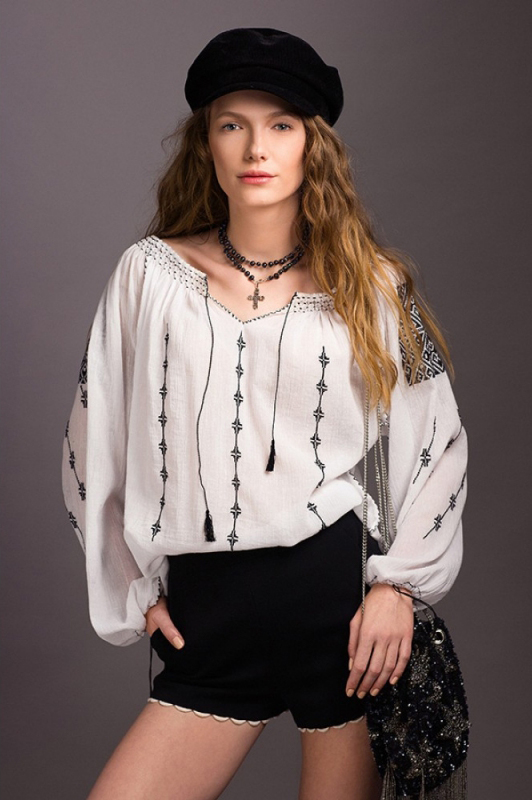

 Română
Română


